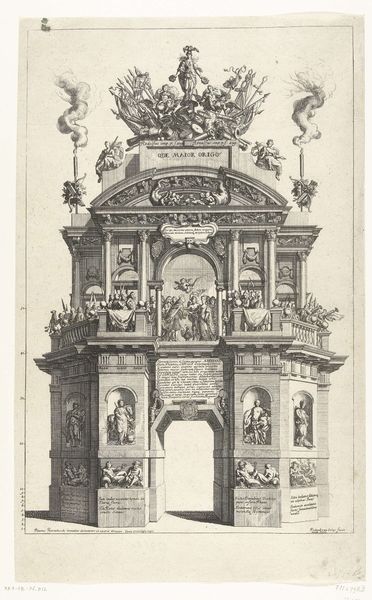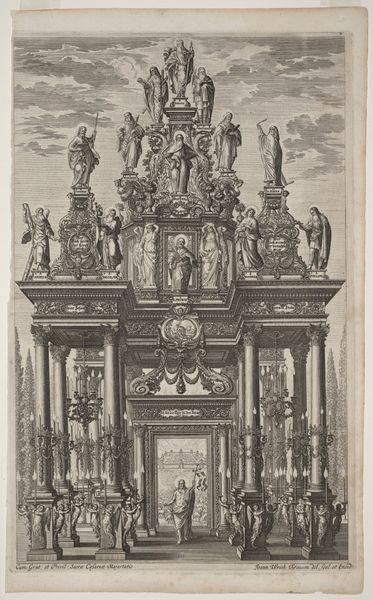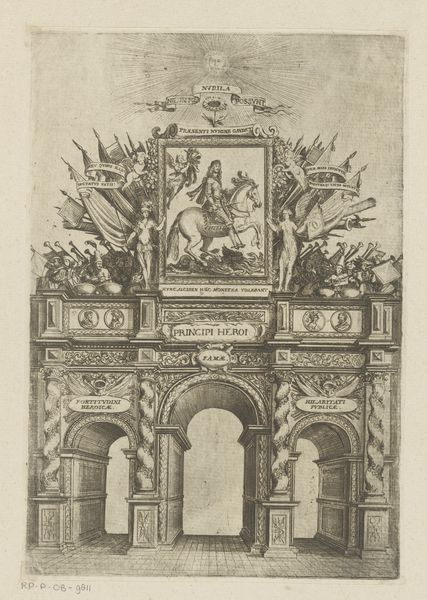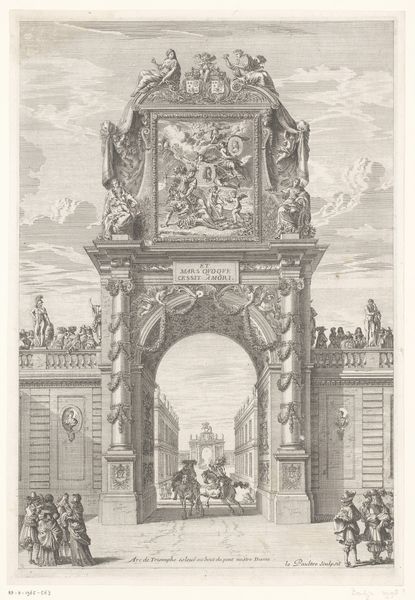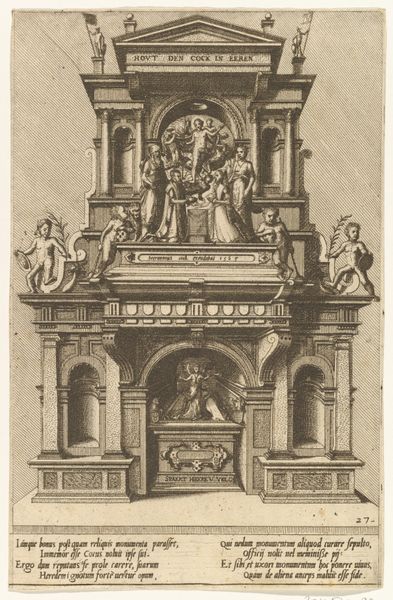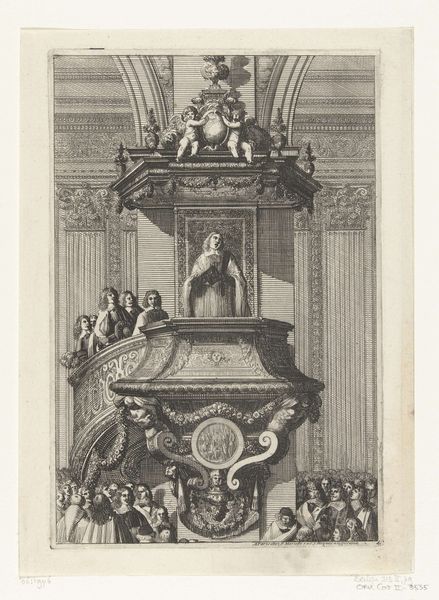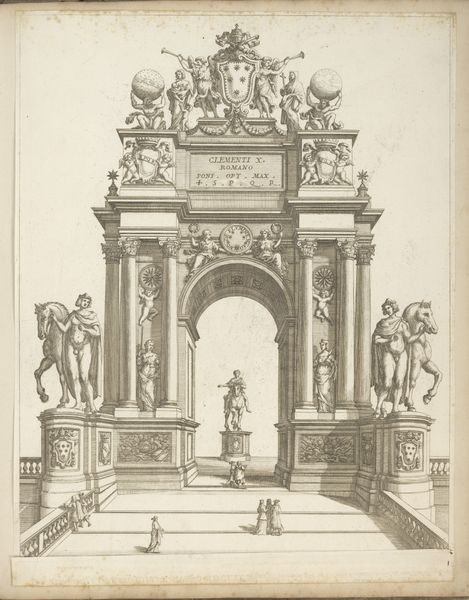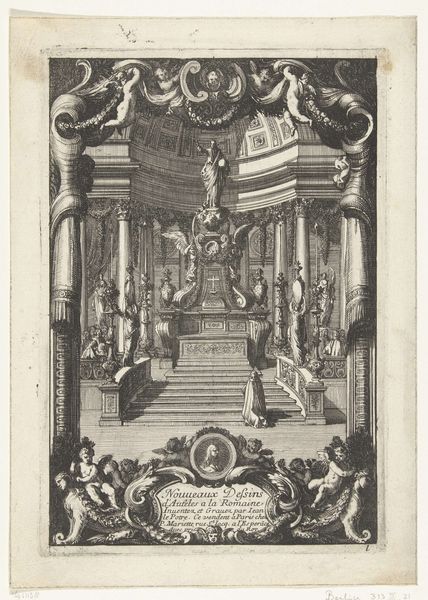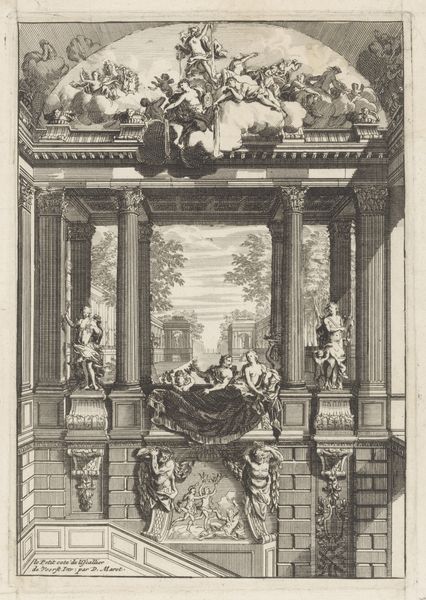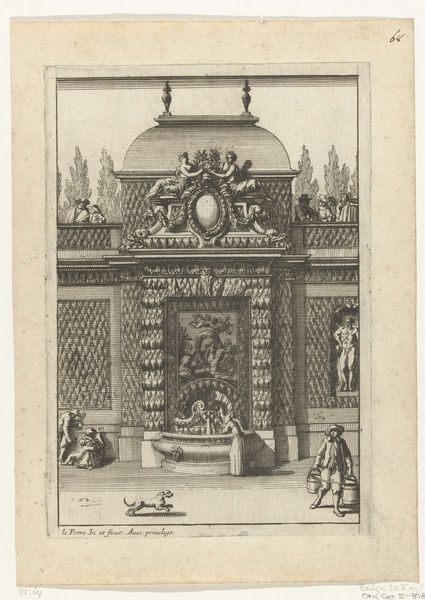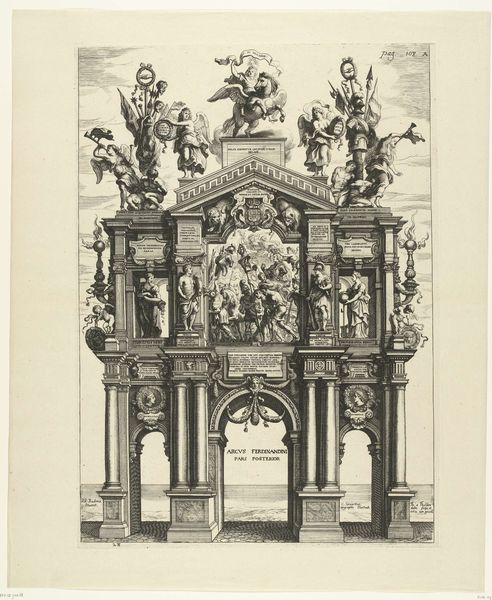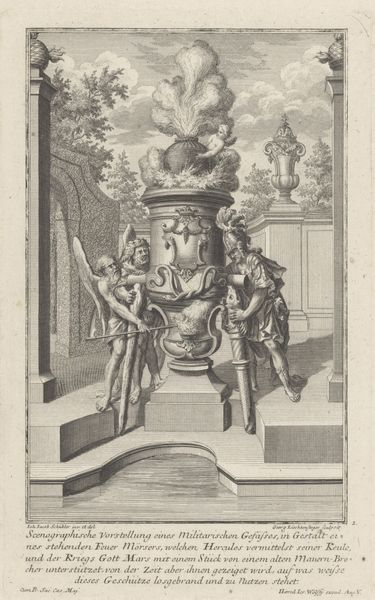
Triumphal arch erected in honor of Cardinal Mazarin after the Treaty of the Pyrenees 1659 - 1669
0:00
0:00
drawing, print, engraving
#
drawing
#
baroque
# print
#
cityscape
#
history-painting
#
engraving
Dimensions: Sheet (Trimmed): 10 1/4 × 7 5/16 in. (26.1 × 18.6 cm) Mat: 11 5/8 in. × 8 in. (29.6 × 20.3 cm)
Copyright: Public Domain
Curator: Today, we're looking at a print by François Chauveau titled "Triumphal Arch Erected in Honor of Cardinal Mazarin after the Treaty of the Pyrenees," dating from around 1659 to 1669. Editor: My initial impression is of structured grandeur – a statement piece composed of many intricate components working together to signify wealth and strength, despite its small scale on paper. Curator: Exactly. This artwork presents us with an interesting commentary on the treaty. Chauveau was very interested in not just portraying what this structure looks like, but exploring Mazarin’s contribution through allegorical and symbolic languages. The medium used by Chauveau—printmaking—is very relevant here because it gives the image a wide distribution that can be made across nations and social classes. Editor: That's interesting in itself. While this work clearly glorifies the Cardinal and the Peace Treaty, could this widespread distribution of prints be seen as an attempt by the monarchy to sway public perception, or perhaps even intimidate other powers at the time? Was Mazarin loved as a peacemaker by all? What other voices might offer perspective on this historic occasion? Curator: That is something to ponder, considering what other printmakers had to deal with under monarchical rule. Now let us focus on what he is emphasizing and how he achieves that, like the intricate details in the architecture that convey a certain classical gravitas while showing his deft manipulation of line and texture using printmaking. Editor: Speaking of class and access, this artwork feels steeped in power structures – from the depiction of celebrating common figures to its intended wealthy, politically-connected audience, there's an inescapable sense of inequality embedded within its creation and reception. How might marginalized groups or nations who felt unrepresented respond? Curator: So, how does examining such triumphal pieces from a social justice lens reshape your sense of how such engravings contributed to creating the canon of baroque cityscapes, especially in political life? Editor: It is essential for historical comprehensiveness and challenging inherent power dynamics to ask such things, thereby reframing what art means across diverse viewerships. Ultimately it acknowledges how interwoven it is within political agenda and ideology of class. Curator: Thank you for providing insight into contextual frameworks to reflect upon our artwork! It certainly offers layers upon which we view them with criticality for years to come.
Comments
No comments
Be the first to comment and join the conversation on the ultimate creative platform.
